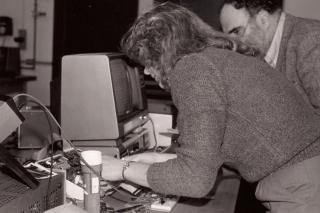Simmons University Celebrates 50 Years of Pioneering Computer Science Education in the USA

Why the 50‑Year Milestone Matters
Simmons University has been a trailblazer in computer science since 1975, long before other institutions added the discipline to their curricula. The program’s history reflects a commitment to interdisciplinary innovation, an emphasis on women’s participation in technology, and a forward‑looking vision of what education in computing can achieve.
As a prospective student focused on computer science education, understanding the roots of Simmons’ program offers insight into the school’s culture—one that values collaboration, hands‑on learning, and real‑world impact.
From a Thoughtful Idea to a Formal Major
In the late 1960s, when most colleges offered only rudimentary programming courses, Margaret Menzin, then a mathematics instructor, saw an emerging need to prepare students for a data‑driven world. With support from faculty like Edward Prenowitz, the department secured accreditation to launch a dedicated Bachelor’s degree in Computer Science in 1975, positioning Simmons as one of the first U.S. institutions to do so.
During the initial years, students faced challenges such as punch‑card programming and limited on‑campus hardware. Nevertheless, the faculty’s determination turned these obstacles into learning opportunities. The early courses blended math, logic, and emerging computing concepts, ensuring graduates were ready for industry or graduate study.
Adapting to Rapid Technological Change
In the 1970s and 1980s, space between the campus and the white‑board of a mainframe was bridged by Acoustic Coupling and later, time‑shared computing. While students at Simmons had to physically travel to institutions like MIT for computation, the university’s early adoption of remote access set the stage for future lab expansions.
By the late 1980s, the university moved beyond external mainframes: student‑run computer labs were established, featuring early PCs such as the Compaq and Macintoshes. These labs became a hub for interdisciplinary projects—ranging from economics modeling to psychology experiments—illustrating the internet connection between computing and other fields that Simmons embraced from the outset.
Building a Course Ecosystem that Encourages Exploration
The curriculum began with foundational classes—FORTRAN programming, network basics, and algorithmic thinking—before expanding into applied modules that met industry demands. During the 1990s, as internet technologies emerged, course offerings were updated to teach modern networking, database systems, and software development practices. This evolution kept the program relevant and positioned graduates for careers in firms, research labs, and even entrepreneurship.
Key Milestones Highlighted in the Program’s Timeline
- 1975 – First cohort graduates with a Bachelor of Science.
- 1983 – Introduction of a dedicated computer lab in the library.
- 1993 – Launch of a minor in Applied Computer Science for non‑major students.
- 2009 – Addition of a capstone design elective that partners students with local businesses.
- 2025 – 50‑year celebration, featuring alumni reunions and a special publication on the program’s impact.
What Today’s Students Can Expect
The Computer Science program remains deeply rooted in Simmons’ core values: inclusive education, hands‑on labs, and interdisciplinary collaboration. Students now work with state‑of‑the‑art equipment, including benchmarking clusters and software engineering bootcamps, while still benefiting from close faculty mentorship.
Moreover, the program actively promotes diversity: outreach partnerships with high schools, scholarships specifically for women, and a mentorship structure that pairs seniors with underclassmen.
How to Take the Next Step Toward A Computer Science Career at Simmons
If the history of innovation and the current strength of the program excite you, consider the next steps:
- Learn more about the B.S. in Computer Science program: Review the course catalogue, program outcomes, and alumni achievements.
- Apply to Simmons University: Visit the admissions page to begin the application process and set deadlines.
- Schedule a campus visit or join an online information session: Experience the labs virtually or on‑campus and meet faculty.
- Explore graduate programs that align with your interests: Many students continue with master’s or Ph.D. studies, often supported by industry scholarships.
- Connect with alumni: Join the Simmons alumni community to hear firsthand how the program supports long‑term careers.
These actions will help you understand whether Simmons’ pioneering spirit and solid educational foundation match your career goals in computer science, engineering, and technology innovation.

